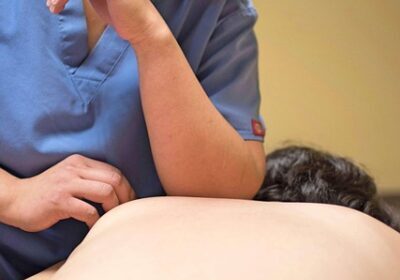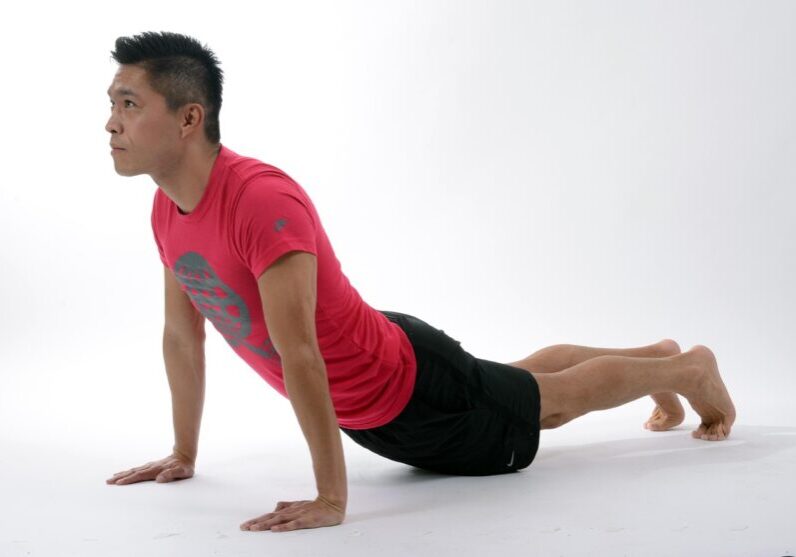
The concept of down. The apple tree that sits in the English orchard of Woolsthorpe Manor may be the most famous tree in the world. Sir Isaac Newton pondered about the concept of down after being hit by an apple under this tree in the 17th Century. Scientific folklore has questioned whether he was actually hit by an apple or simply observed it falling. Whatever the case, gravity was defined and so was the foundation of classical physics.
As a mother of two young children and a Pelvic Floor Physical Therapist, I did not need to sit under an apple tree to understand the effects of gravity. I could both feel and see it in myself, the patients I was treating, and it felt and looked… well… a bit grave.
So what is the Pelvic Floor? Is there more to “that” place on the body that supports the functions we get embarrassed to speak about like poop, pee and sex?
Of course there is! The pelvic floor consists of layers of muscles and other tissues that span the floor of the pelvis and support the pelvic organs. For men, it supports the bowel and bladder and for women it’s supports the bowel, bladder and uterus. Shaped like a hammock, extending from the pubic bone to the tailbone, it is sometimes called the pelvic sling, the pelvic diaphragm and for the lay person, the thank you muscles as it keeps us from experiencing some embarrassing moments in our life.
Apart from the obvious importance of preventing urinary, fecal and flatulence incontinence (yes, this is actually a condition) and supporting organs that are critical to the propagation of human society, it also acts as an important intersection for our biomechanical health throughout the body. It is intimately connected to the pelvis which is central to how we move as bipeds. It serves as an important sling for basic activities of daily living such as walking, sit to stand, running, walking up stairs and even breathing.
The concept of Up. Thank you Dr. Henry Kegel for changing the view we have about the pelvic floor musculature and improving the lives of so many women with weakness in this area. Dr. Kegel was born in February 1894 and was an American gynecologist who invented a device called the Kegel Perineometer that could measure the pelvic floor muscle voluntary contraction. He is also creator of the most famous pelvic floor exercise known to date…..the Kegel. Kegels or pelvic floor contractions are considered the go-to strategy to deal with urinary incontinence and pelvic floor prolapse (when the bladder, uterus or rectum protrude into the vaginal or anal canal and beyond in some severe cases). Now that I’ve mentioned this, are you squeezing right now? I am. It’s hard not to engage this area when discussing it, just like how we sit up straight when discussing posture. (See, I know I just made you sit up straight too…). As we all grapple with the effects of gravity, we will Kegel and sit up straight when reminded because we know that, somehow, the direction up must be good for us.
But is it always the right direction to work? And are Kegels the only way to work this area? If pulling up is what counters gravity and Kegels are the contraction that pull our pelvic hammock up, shouldn’t we just be Kegel-ing all the time? The answer is no…..Dr. Kegel spent 18 years researching this area in the 1940’s with his female post-partum patients. With utmost respect, the intervention is more than 70 years old, and may need some updating using current emerging research and concepts. For instance, there are certain circumstances where relaxing our pelvic floor in a downward direction may be beneficial. For patients that suffer from pain with sex, constipation or hyper-continence issues where there is difficulty starting a urine stream, tightening what’s tight is not sensible. As an aside, the pelvic floor musculature is one of the few striated muscles in the body that shows resting muscle activity (which means that it has both voluntary and involuntary muscle contraction capabilities). The pelvic floor is constantly fine tuning its position like a postural muscle but can also contract voluntarily, especially when you are in the window seat and you really have to go! This dual function which influences the pelvic floor resting tone may be the most important determiner of pelvic floor health, versus a single strength measure of a squeeze. As the pelvic floor moves up and down and adjusts to it’s environment, it is the overall resting tone of the pelvic floor, under conscious and unconscious control, that regulates its position and finds a natural equilibrium (and what keeps pee off the floor).
The pelvic floor equilibrium! As a pelvic floor PT, I was often treating patients who were dealing with the effects of a downward moving pelvic floor such as pelvic weakness from birthing, pelvic prolapse etc. However, in some cases, I was dealing with the complete opposite; a pelvic floor that was restricted and taut lacking functional movement. Dysfunction seemingly occurred on both ends of the spectrum and the sweet zone for the pelvic floor muscles seemed to be somewhere in the middle. For patients with a weak or low pelvic muscle tone, Kegel-ing is advised. However, patients with a high pelvic muscle tone, Kegel-ing is really not the right approach, infact, could continue to aggravate issues. In this situation, what is needed is the opposite of a Kegel or what I like to call the Legek (I’ll let you figure that one out). The Legek can be achieved using breath, stretch exercises, manipulation or all of the above. Given the opposing instructions for low and high tone patients, we as health care practitioners need to find a way to discern between these two ends of the spectrum and no better person to do this than the patient themselves.
Pelvic Visual Analog Scale (P-VAS)
I became interested in learning about a patient’s own subjective assessment of their pelvic floor for a few reasons. Firstly, I wanted to empower my patients to know more about their body rather than rely on my digital assessment to provide them with knowledge. Secondly, I wanted to give practitioners who don’t necessary treat the pelvic floor a quick way to determine if a patient may require more attention by a PT or MD. Initially this scale was designed for those that had questions but were reserved about being evaluated. Realizing the amount of information that could come out of this scale, I realized that MD’s, such as the OBGYNs, Urologists, GI’s, and pelvic floor PT’s could also benefit from this scale by determining what interventions may be suitable for a patient without a formal pelvic evaluation and as a way to monitor subjective changes in their patients.
I developed a subjective assessment tool, called the Pelvic Visual Analog Scale or P-VAS which is similar to the Visual Analog Scale or VAS for pain. This scale can be administered to anyone who wishes to determine how strong they perceive their pelvic floor muscle on action in relation to how loose they feel on stretch. It is purely subjective, so there is no wrong answer. By learning about one’s own perception of pelvic floor tone, one can direct questions to a practitioner to see if further assessment or treatment is warranted.
Happy lifting and lowering.



